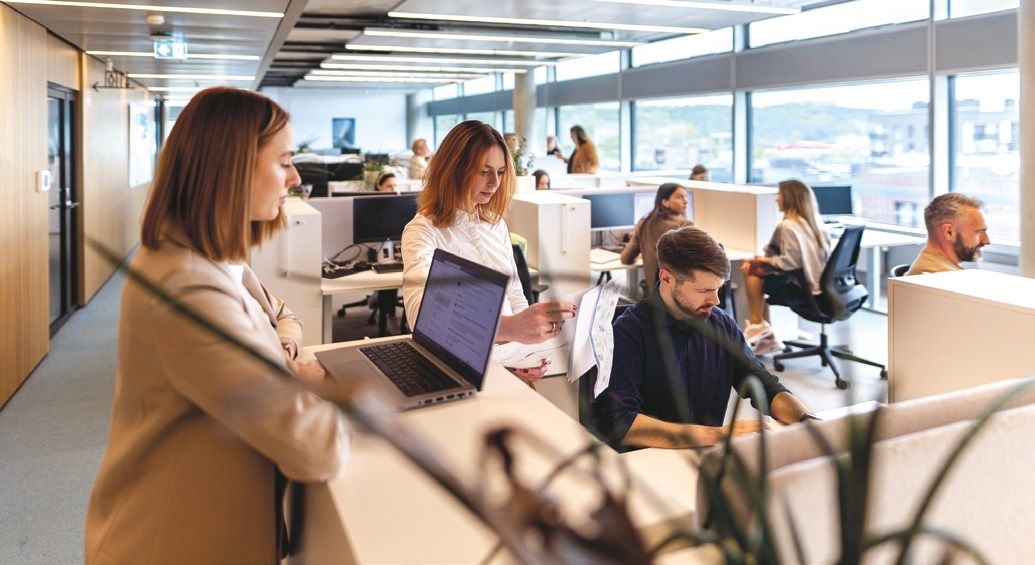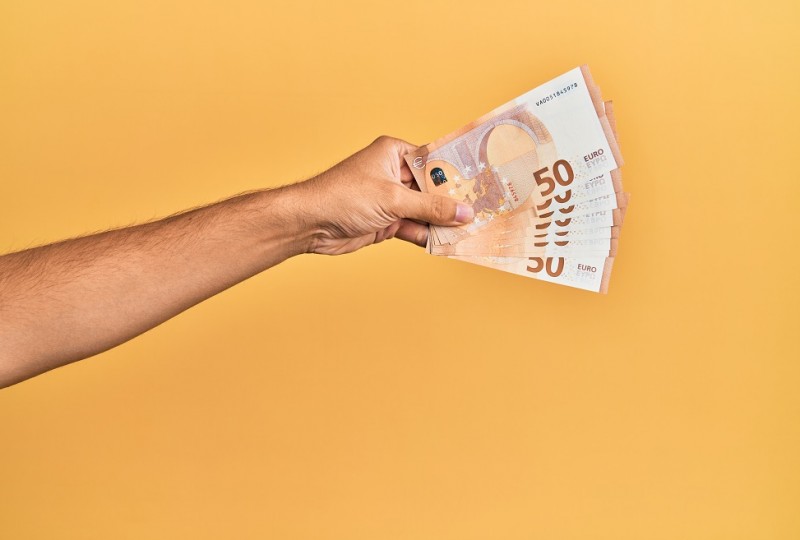Office revolution just begins

The Covid-19 pandemic has unleashed another revolution in office design in Poland. Companies attract employees by focusing on their comfort and safety.
Over the past 18 months, the situation in offices has changed several times – from the transition to remote working, through partial returns to stationary work, to the development of hybrid formats. It is also worth remembering that the chosen model of work depends on the company’s profile and the team structures. We are witnessing a transformation influencing changes in the functions of office spaces and how both employees and employers approach them. It's the boost for new trends in office design to emerge – and as the fit-out experts at Tétris point out, this is just the beginning of the revolution ahead.
Safety and comfort first
The onset of the Covid-19 pandemic has shaken the sense of security in interpersonal relationships that were vital in office social life. Most corporations switched to remote working, but no one doubted that this was a temporary situation, and sooner or later, we would return to the office.
As pandemics emerged, companies began questioning us about ways they may better care for the health and well-being of their employees. At that time, we were at the beginning of the journey, experimenting and learning best practices with our clients’ workplaces. Today, I can honestly say that we have this topic worked out pretty well.
Anna Rębecka, Senior Creative Architect, Tétris
The factor that currently influences changes in design is the new office organization. Nowadays, as Design x Build Tétris experts point out, they work closely with HR departments at the concept stage – which wasn't that common in the past. Getting to know the company's new habits in detail is important, e.g. – the number of employees working from the office regularly, percentage of the crew present in the office every day, teams working together, types of tasks performed in the office versus a model that combines people who work stationary and remotely. It helps prepare a tailored space plan for the company and its employees.
We started by ensuring social distance in offices. In practice, it turned out that a large distance between desks is not conducive to teamwork and takes up a lot of valuable, and undoubtedly, expensive space. So, we developed a concept in which employees do not sit far from each other, but instead in smaller groups. What works the best here is the idea of desk-sharing. Of course, this solution will not be suitable for every company. It will work well in organizations where employees do not spend all their time at their desks – they are involved in meetings within or outside the company, work partially remotely, etc.
Anna Rębecka, Senior Creative Architect, Tétris
The desk-sharing solution is more and more welcomed by employees due to the growing popularity of services that enable sharing various goods – such as applications for renting cars, scooters, accommodation or parking spaces. Nevertheless, the main concern of the opponents of such arrangement is the loss of their assigned desks. However, it is worth emphasizing that employees in return receive many more facilities and various spaces.
By implementing shared desks, we are simultaneously planning more comfort-oriented concepts in the office space and zones adjusted to different types of work, such as quiet rooms, phone booths, small meeting rooms, chill out areas with comfortable sofas, places for creative and project work. The employees have the opportunity to perform duties wherever they find the most convenient. Our experience proves that it elevates efficiency.
Anna Rębecka, Senior Creative Architect, Tétris
The era of well-being
Until recently, one of the essential functions of the office was the representative one, because that was the place where meetings and negotiations with clients took place. With this in mind, formal zones were designed to evoke the so-called 'wow' effect. Designers focused mainly on the look of receptions, conference rooms, director's offices or other places intended for formal meetings.
Pandemic brought us into the era of focusing on the needs of employees. Employers are more willing to invest in staff well-being, and the office look becomes an important element of employer branding.
We're experiencing an evolution in the way companies build their identity. Now principals are focusing on people and saying, >>We are people, not logos<<. The office must attract employees. They need to feel comfortable, effectively perform their tasks and spend time creatively. The office should offer more comfortable work conditions than home, and at the same time it should be a bit home-like. These expectations were listed in almost every project we have carried out over the last year.
Anna Rębecka, Senior Creative Architect, Tétris
The homely atmosphere is one of the strongest trends in office design. To properly plan the space, where e.g., the kitchen and dining area will play an important role, it is crucial to think about it at the very early design stage. When finishing the interior, it is essential to choose relevant materials, so that wood and fabrics dominate. The vast number of plants is always a nice touch too.
Biophilic design develops very dynamically. In our projects, plants appear wherever possible, and we see that companies want to invest in such solutions. Plants give the interior a pleasant look and can be used as aesthetic, natural partitions. Improved acoustics and humidity levels are always a plus. We have some green walls in our Warsaw office, so it also serves as a showroom for our clients. What is worth noticing, there are systems available on the market to remotely control watering cycles and measure the humidity of the soil – which reduces operating costs and significantly simplifies maintenance.
Anna Rębecka, Senior Creative Architect, Tétris
Receptions of the future
Traditional reception desks are not yet a thing of the past. However, with fewer visitors in offices, designers are already looking for alternatives.
Currently, we have the pleasure of working on the virtual reception area. We started the project during the pandemic and at first, it was supposed to look classic. Nevertheless, with limited contractors’ visits, this part of the office is rarely used. We can exploit this space much more effectively. Therefore, we have implemented virtual solutions there – a visitor notifies his arrival via tablet and this information is transferred remotely to the appropriate person. We also thought about access control on both sides. At the same time, we changed the furniture arrangement in the room – we used more sofas, tables, and project tables for meetings. Guests have no contact with all the employees, which is also an element increasing the sense of safety.
Anna Rębecka, Senior Creative Architect, Tétris
The Covid-19 pandemic has unleashed a revolution in office design in Poland. New trends, such as well-being, have already existed in England or Sweden. On the Polish market, interest in such solutions is growing. It is worth emphasizing that this is the beginning of changes. Hybrid work and concern for employees' comfort have accompanied us before year 2020, but not on such a mass scale. The market is learning and developing new standards, while companies want to use their space effectively and, above all – with people’s comfort in mind.
Tétris Press Office







